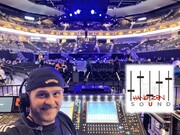New York, NY (Top40 Charts) Tractus emphasizes Arvo Pärt compositions that blend the timbres of string orchestra and choir. New versions predominate, with focused performances from the Tallinn Chamber Orchestra and the Estonian Philharmonic Chamber Choir under Tõnu Kaljuste's direction that invite alert and concentrated listening. From the opening composition Littlemore Tractus, which takes as its starting point consoling reflections from a sermon by John Henry Newman, the idea of change, transfiguration and renewal resonates, setting a tone for a recording whose character is one of summing up, looking inward, and reconciling with the past.
Tõnu Kaljuste, a long-time ally of Pärt, points out that much recent discussion with the composer has revolved around new approaches to the scores. Commenting on the wide-reaching and evocative repertoire brought together here, Wolfgang Sandner remarks in the CD's liner note, "sound and silence, music and word always remain in dialogue in Arvo Pärt's work. But the vocal and the instrumental too, the sacred and the profane, complement each other. Liturgical ritual and spiritual concert are in exchange and form a context that points to a common origin."
The compositions included on Tractus are based upon or inspired by scriptural, liturgical or other Christian texts. "The text is independent of us," Pärt once said. "It awaits us. Everyone needs his own time to come to it. The encounter occurs when the text is no longer treated as literature or artwork but as reference point or model."
Recorded in Tallinn's Methodist Church last year, Tractus extends the line of Arvo Pärt albums begun with Tabula rasa in 1984, the recording which initially brought Pärt's music to widespread awareness. The collaboration between Arvo Pärt and producer Manfred Eicher has persisted now for forty years: "Our work together making new records is always a celebration," Pärt has said. "It is something very lively and in continuous formation."
The Tractus album includes a booklet with all sung texts and liner notes by Wolfgang Sandner (in German), and by Kai Kutman (in English).
| 





















